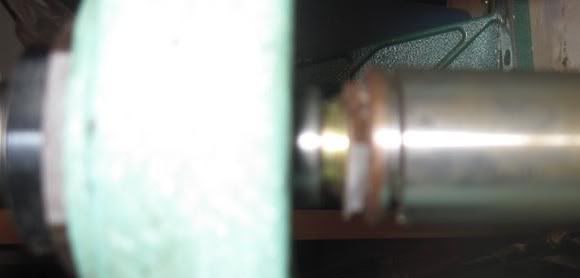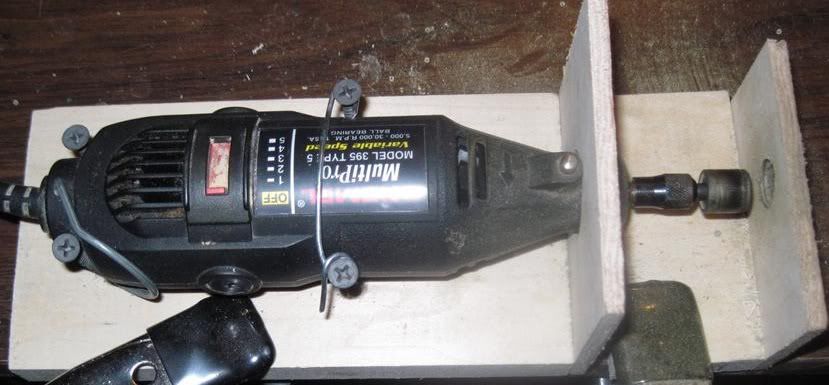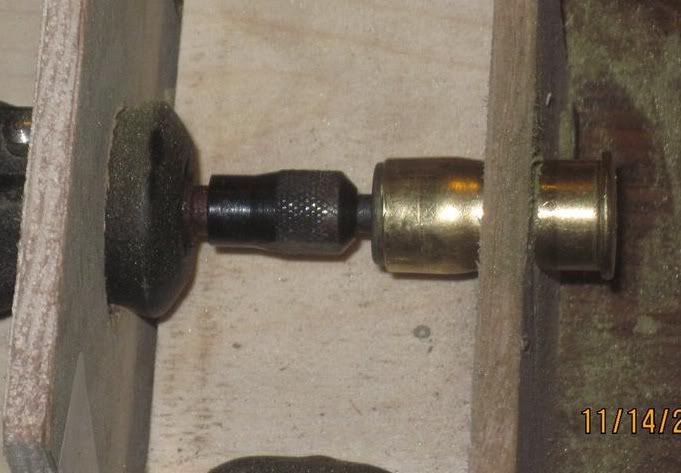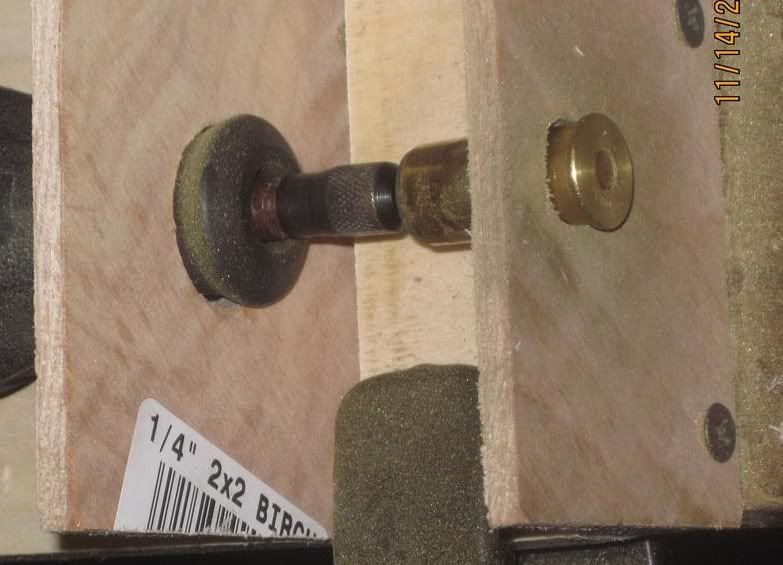DISCLAIMER: I offer this for your information ONLY. Follow all the established rules for safely shooting any weapon. If you decide to follow these directions you are taking full responsibility for any accidents or injury that may result from improper use or action. Shooting live ammunition is dangerous. Any time you change the dimensions of a brass cartridge, which is whats required when you transform one type of cartridge to another, you must take care when shooting it. Make sure to inspect all brass for imperfections before you reload it. Again, guns are deadly so take all precautions when shooting.
You will find that in order to make Spencer brass from other types of brass some sort of lathe is needed if you need to reduce case thickness or rim thickness or rim diameter. After some experimentation I came up with this made from a Dremel tool.
You will find that in order to make Spencer brass from other types of brass some sort of lathe is needed if you need to reduce case thickness or rim thickness or rim diameter. After some experimentation I came up with this made from a Dremel tool.
Here's what I came up with this made from a Dremel tool. This Jig has two pieces. The mounting for the Dremel Tool and the guide for the cartridge.
The mounting for the Dremel Tool is made from a 1”x4”x6” in piece of popular and a 1/4”x3”x3” square piece of plywood mounted to one end of the 1”x4”x6” board at a right angle. A 1" hole was drilled in the birch plywood piece in alignment with the Dremel tool's collar. The body of the Dremel tool is secured to the 1x4x6 in piece with a couple of screws and some wire.
The guide for the cartridge is made from 1”x4”x1.5” piece of popular and a 1/4”x3”x3” square piece of plywood mounted to one end of the 1”x4”x1.5” board at a right angle. A 9/16 hole is drilled in the plywood piece directly centered and aligned with the Dremel tool's spindle. This piece keeps the case spinning true while working on either the case body, the case rim's diameter or the rim's thickness.
Both pieces clamp to my work bench using a spring clamps, which keeps it secure, but allows me to relocate it where I want.
You can reduce case diameter, rim diameter and rim thickness with this rig. Cases can get very hot as you work on them, so go slow. I use pieces of 220 grit and 440 grid sand paper to work the cases. Small flat files as well, but I've found sand paper seems to work the best.
Special Tools Part II: Tools Needed to Run 32 Gauge Brass Up To The Rim In The Resizing Die.
As part of the forming process you will need to run the base all the way up to the rim in the resizing die. This means that you'll have to remove the shell holder and replace it with a flat piece of metal to present a flat surface for the rim to rest on and you'll need to find or make a special tool to push the case out of the sizing die after you run it up. Any sturdy piece of metal will work for presenting a flat surface for the rim to rest on. I use a bit of file tip.
 |
| Note bit of file between the case and the press piston |
Once you run the case up the die, you'll need to remove it from the sizing die. You'll dowel of some type with a diameter smaller that the case diameter to pop the case out of the die with a hammer. There's a bit of a complication since 32 gauge brass has a raise picket for the primer. If you use a dowel with a flat face you will deform the pocket, so you will need a recess in the dowel larger than the raised primer pocket. I have discovered that the stem from Kobalt Tools Item# 239374, Model 60223 6-in1 Multi-Bit Screwdriver work well for this. It has a small hexagonal hole on one end and a larger one on the other end that fits well over the 32 gauge primer pocket and will allow you to pop the cartridge out of the sizing die with a blow from a hammer without deforming this pocket and the case.
 |
| Stem for the Kobalt Multi-Bit Screwdriver |
The next post of the series will be: Making Brass for the 56-50 Armi Sport Reproduction Spencer From 32 Gauge Shotgun Shell Brass Part III



No comments:
Post a Comment